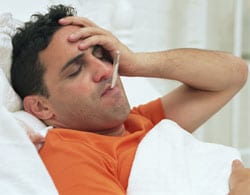As tens of thousands of Keralites affected by last month’s floods are busy cleaning up, the second threat now is leptospirosis, commonly known as rat fever.
September 4th, 2018- The toll from the disease over the past five days alone is more than three dozen.
- Two volunteers in the rescue and rehabilitation work in the aftermath of the floods lost their lives to the disease.
- Authorities have asked all those who had walked through water — either as victims or rescuers — and are now showing symptoms of rat fever, like fever, headache, red eyes and vomiting, to seek medical help at hospitals.
CDC: In humans, Leptospirosis can cause a wide range of symptoms, including:
- High fever
- Headache
- Chills
- Muscle aches
- Vomiting
- Jaundice (yellow skin and eyes)
- Red eyes
- Abdominal pain
- Diarrhea
- Rash

Many of these symptoms can be mistaken for other diseases. In addition, some infected persons may have no symptoms at all.
The time between a person’s exposure to a contaminated source and becoming sick is 2 days to 4 weeks. Illness usually begins abruptly with fever and other symptoms. Leptospirosis may occur in two phases:
- After the first phase (with fever, chills, headache, muscle aches, vomiting, or diarrhea) the patient may recover for a time but become ill again.
- If a second phase occurs, it is more severe; the person may have kidney or liver failure or meningitis.
The illness lasts from a few days to 3 weeks or longer. Without treatment, recovery may take several months.


